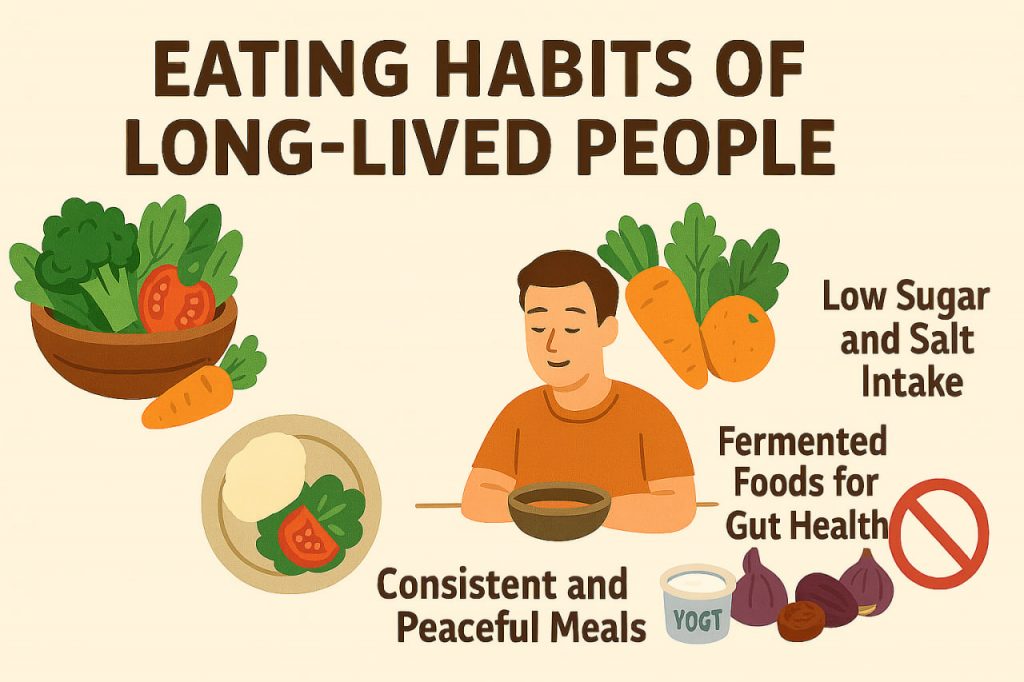In various parts of the world, from Okinawa in Japan to Sardinia in Italy, researchers have identified communities where people often live past 90 or even 100 years. These areas are known as blue zones, and one of the strongest factors linked to longevity is nutrition. Despite cultural differences, long-lived individuals tend to follow remarkably similar eating patterns.
Plant-Based as a Foundation
Long-lived people typically build their diets around plant-based foods. Vegetables, leafy greens, and legumes are daily staples, while meat and fish are eaten rarely and in small amounts. Whole grains and fruits also play an important role, offering fiber, vitamins, and slow-digesting carbohydrates.
Minimal Processed Foods
Highly processed foods are almost absent from the diets of long-livers. Instead of consuming snacks, soda, and packaged sweets, they focus on home-cooked meals made from fresh ingredients. This keeps chemical additives, preservatives, and refined sugars to a minimum.
Moderation in Everything
A common principle among centenarians is to stop eating before feeling full. On Okinawa, this is known as Hara Hachi Bu — eating until you are 80% full. This habit reduces the risk of overeating and helps maintain a healthy weight throughout life.
Consistent and Peaceful Meals
Meals are eaten at regular times, often slowly and in the company of others. This promotes better digestion, stress reduction, and a strong social bond — another factor linked to long life.
Healthy Fats, Not Trans Fats
Long-lived people avoid trans fats and deep-fried foods. Instead, they use natural fats from sources like olive oil, nuts, seeds, and occasionally fatty fish, which support cardiovascular and brain health.
Fermented Foods for Gut Health
Foods like kimchi, miso, sauerkraut, and yogurt are common in longevity diets. These fermented items contain probiotics, which strengthen the gut microbiome and improve immunity.
Low Sugar and Salt Intake
Centenarians eat very little added sugar. When they crave sweetness, they prefer fruits or dried fruits. Likewise, salt is kept low, with herbs and spices used for flavor instead of relying on sodium.
Glossary
- Blue zones – regions where people commonly live past 90 or 100 years.
- Plant-based foods – foods primarily from plants like vegetables, legumes, fruits, and grains.
- Fiber – plant substance that helps digestion and supports gut health.
- Preservatives – chemicals added to food to extend shelf life.
- Overeating – consuming more food than the body needs.
- Natural fats – fats from unprocessed sources like oils, seeds, and nuts.
- Probiotics – beneficial bacteria that improve gut health.
- Added sugar – sugar that is not naturally present in food but is added during preparation.
- Sodium – a component of salt that affects blood pressure when consumed in excess.


